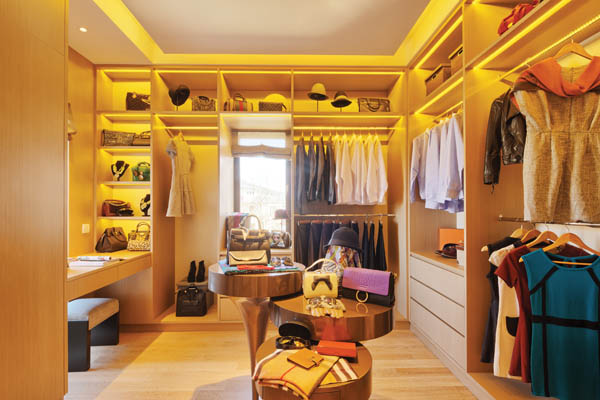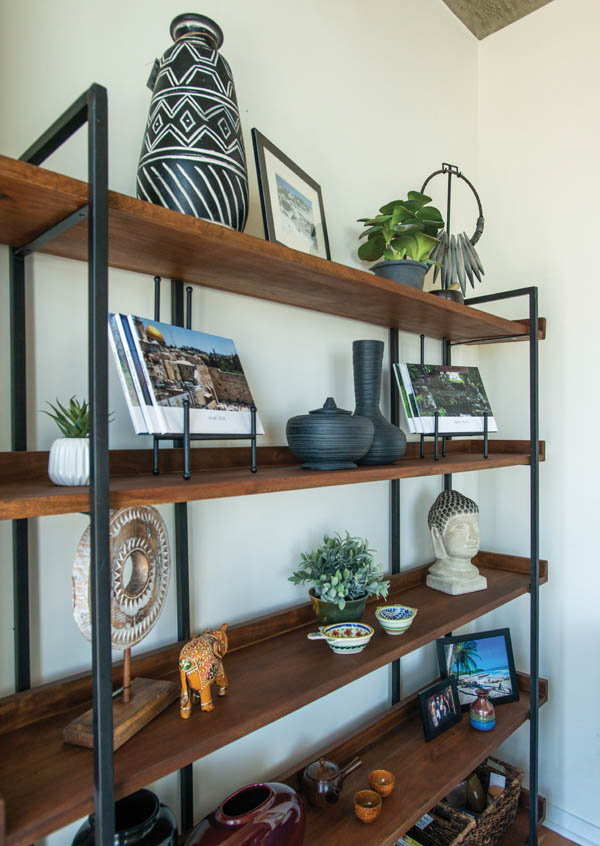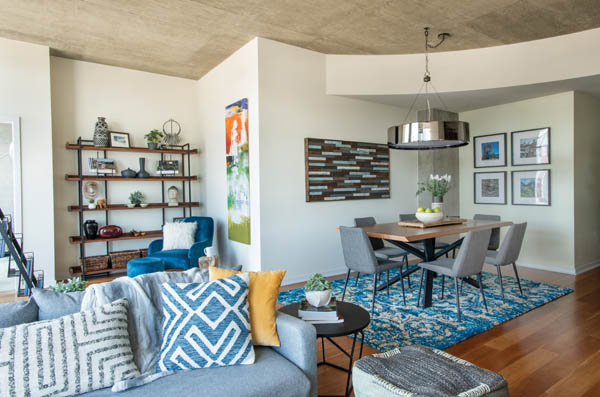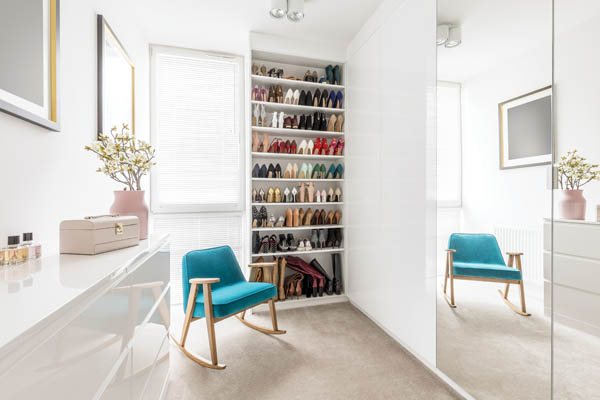It can be a design challenge to display your favorite collections in a way that’s both pleasing and highlights what you love about your items. We asked local designers to weigh in with tips for ensuring your collection is seen in its best light.

Dawn Wilkinson, Six Walls Interior Design
six–walls.design
AvidLifestyle: What displays do you often see in your interior design projects?
Dawn Wilkinson: The closet is typically the main area—at least for the women of the household—where they like to display a collection of shoes, sunglasses or handbags. Being able to view them and see them each time you walk into your closet or dressing area is something that brings people joy. I think about things from a seasonal perspective. What you might want to display in the spring and summer would be different than what you would want to show in the winter and fall—also, make sure that the area you’re setting up for that display is well lit.
AL: Should someone organize handbags, for instance, by color or like a rainbow?
DW: If you’ve watched the Netflix series “The Home Edit,” you’ll find a rainbow display can be a super pleasing way to arrange things. I like the idea of showcasing vignettes of collections and grouping similar items with a color scheme together. So, you might group greens and blues, then put your warmer colors, like reds, oranges and yellows together in a different section.
AL: What’s the benefit of working with a designer to create a display instead of buying some shelves and putting out your collection?
DW: When you’re working with a designer, one of the huge benefits is he or she can help you create a detailed inventory—getting them into a document with an item photograph, the dimensions, the brand, the value. Then the designer can take those bits of information and produce a drawing or a rendering that illustrates how the collection will look in your space once all the accommodations are made for the various sizes of the items. A design professional’s value is that technology piece to help you understand what it will look like when it’s done. A designer will also have the professional background to bring together the different tradespeople to execute. It’s not going to be one person that creates this case for something to sit in. There’s probably a combination of electrical work, woodwork, glasswork, metal and possibly a locksmith.
AL: If a collection will grow over time, how do you display the collection now but then allow for that growth?
DW: I think the main component is making sure that it’s in an area that can accept growth. Discuss that with your design professional n7say, ‘I only have a hundred of these items now, but 10 years from now, I want my collection to double,ʼ and then have them illustrate that for you at the time that the design is put together and having additional units to contain your collection made at the same time and a mounting plan or an installation plan that shows how the collection would grow.


Adriele Graham, House Meraki Interior Design
AvidLifestyle: How do you go about putting together a collection of items that are not similar in size or scale, such as pottery?
Adriele Graham: I don’t think everything has to match, but certain things do complement each other. Look at your collection and try to group items that have a similar feeling to create what we call small vignettes. Pairing some things with a similar feel but also having contrast in height is important. Put taller items in the back with something a little shorter and a lot shorter in front.
AL: What suggestions do you have for a collection of small items?
AG: Small things can get lost and look somewhat tchotchke-ish if they aren’t correctly displayed. Group them in a tray or a small glass box. And then instead of it looking like 15 tiny little things, the weight is really in that tray or the box. And on a different level of inspection, you then get to see each piece layered in. Our client inherited these small animal figurines about one inch by one inch. And they were lost because they were just scattered. By bringing them together and putting them on a beautiful tray, we were able to highlight them.
AL: How do you suggest putting together a display of books in a more exciting way than all standing up on a bookshelf?
AG: One client loved to travel and create picture books of all her travels, but she had all of them out, which was very overwhelming. So, when dealing with some extensive collections, it’s worth acknowledging what space you have to use for display. For her collection of those books, we did two things. We featured two front books on plate stands on a bookshelf. And we put a couple behind it, too, so they could have some weight. In addition, we put several photo books in a magazine rack. This way, she still had easy access to them. And then, the idea with the plate stands was that she would rotate out which books she wanted to feature.
AL: Are there some collection organizing rules of thumb you suggest?
AG: Vignette items—group certain items together and give them space. Many people are prone to filling the entire shelf space, which feels overwhelming. You want your items to have some room to breathe. When looking at shelf space, you should only be filling about 60 percent and leaving 40 percent to put gaps between items. This allows your eyes to be able to focus on those different vignettes.

Collection Considerations
Dawn Wilkinson suggests starting with this list of things to consider before embarking on the immense task of wrangling your collection.
• Create an inventory of what you have.
• Lighting is a crucial element.
• What are the best viewing angles for the items you want to showcase? Is it from above looking down, or is it straight on?
• Is there a security need? Does this need to be behind something that has glass and is locked or mounted to a wall where it can’t be easily removed?
• Is this a growing collection, or is it static? Is it going to stay the same way?
From that perspective, does it need a dedicated area within your home, or can this collection be divided into separate areas?
• What is accessibility like? Is there only one individual that needs access to this, and is it something for guests to view, or is this something private?
• Does this collection need to be humidity or temperature controlled?


